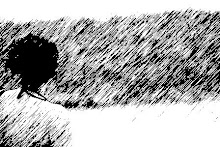





During Argentina's 'Dirty War' of the 1970's, between 10,000 and 30,000 innocent people died at the hands of a military junta. Mostly students, trade union leaders and human rights workers, the victims were kidnapped, tortured and murdered. Countless were drugged and thrown into the frigid waters of Buenos Aires' Rio Plate.
On a Thursday afternoon in April 1977, 14 mothers marched on the capital's Plaza de Mayo and demanded answers to the whereabouts of their children. Little by little, their numbers grew and they marched every week in their iconic white handkerchiefs. Till this day, dozens of mothers who lost their children three decades ago march every Thursday at 3:30 pm on the same spot in front of the capital's famed Casa Rosada.
In November 2005, I was in Buenos Aires and had the opportunity to witness these protests. The Mothers set up a table off the side of the plaza, distributing pamphlets and information. There, I had the chance to speak to one of them and learn a little bit about one of the many tragic stories that plague the city’s history.
Augustina’s daughter, Maria Isabel, disappeared 28 years ago. She was a law student who was 25 when she went ‘missing.’ Augustina has attended the protests on a weekly basis for nearly three decades. Through heart-wrenching investigations and an indomitable spirit, she has been able to find out where her daughter was kept prisoner, and has come close to finding out what happened to her.
I asked Augustina if she would ever give up her cause. Without hesitation, she told me that she will come here every Thursday until she dies. I have no doubt that she will continue to march even if she should receive the answers her heart so desperately seeks.
WEBSITE: www.madres.org
READ:
Mothers of the Disappeared by Jo Fisher
Circle of Love Over Death: The Story of the Mothers of the Plaza de Mayo by Matilde Mellibovsky
Imagining Argentina by Lawrence Thornton.
SEE:
Imagining Argentina, the screen adaptation of the novel by the same name. Released in 2003, starring Emma Thompson and Antonio Banderas.












